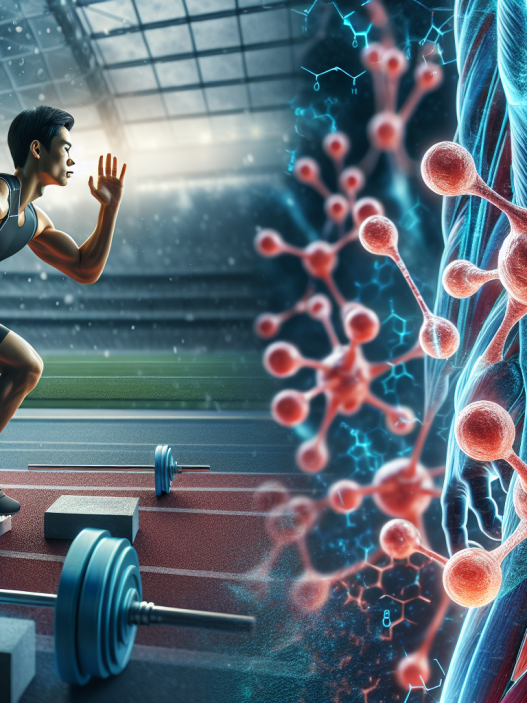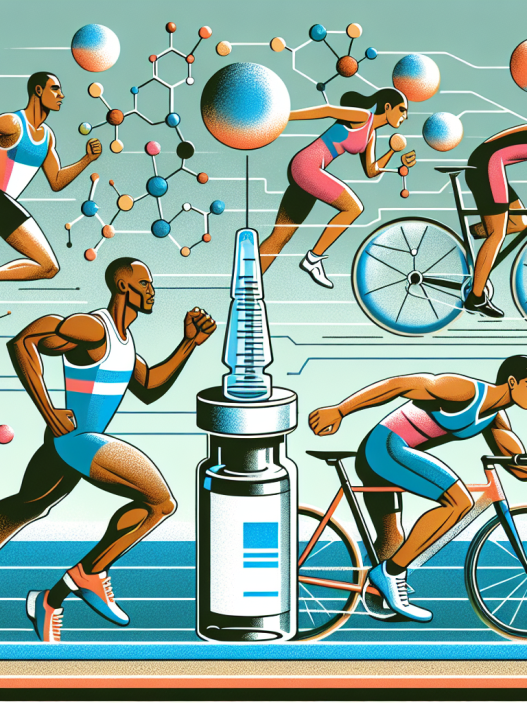-
Table of Contents
Liraglutide: A New Approach to Diabetes Management in Athletes
Diabetes is a chronic metabolic disorder that affects millions of people worldwide. It is characterized by high levels of blood glucose, which can lead to serious health complications if left uncontrolled. For athletes, managing diabetes can be particularly challenging as it requires strict control of blood sugar levels while also maintaining optimal physical performance. However, a new approach to diabetes management has emerged in recent years, offering hope for athletes with diabetes – the use of liraglutide.
The Role of Liraglutide in Diabetes Management
Liraglutide is a glucagon-like peptide-1 (GLP-1) receptor agonist, which means it mimics the action of GLP-1, a hormone that stimulates insulin secretion and reduces blood glucose levels. It was initially approved by the U.S. Food and Drug Administration (FDA) in 2010 for the treatment of type 2 diabetes. However, its use in athletes with diabetes has gained attention in recent years due to its potential benefits in managing blood sugar levels while also improving athletic performance.
One of the main advantages of liraglutide is its long-acting nature. It has a half-life of 13 hours, which means it can provide sustained blood sugar control for up to 24 hours after a single dose. This is particularly beneficial for athletes who may have fluctuating blood sugar levels during intense training or competition. Additionally, liraglutide has been shown to reduce the risk of hypoglycemia, a common concern for athletes with diabetes who may experience low blood sugar levels during physical activity.
Furthermore, liraglutide has been found to have positive effects on body weight and body composition. In a study by Buse et al. (2010), liraglutide was compared to other diabetes medications and was found to be associated with greater weight loss and reduction in body fat percentage. This is significant for athletes who need to maintain a certain weight and body composition for their sport.
Pharmacokinetics and Pharmacodynamics of Liraglutide
The pharmacokinetics of liraglutide have been extensively studied, and it has been found to have a linear and dose-proportional profile. It is administered subcutaneously and has a bioavailability of 55%. The drug is primarily metabolized by the liver and excreted through the kidneys. Its pharmacodynamic effects include increased insulin secretion, decreased glucagon secretion, and delayed gastric emptying, all of which contribute to its blood sugar-lowering effects.
In terms of dosing, liraglutide is typically started at a low dose and gradually increased to the desired dose, which can range from 0.6 mg to 1.8 mg per day. It is important to note that liraglutide should not be used in combination with other GLP-1 receptor agonists or insulin, as this can increase the risk of hypoglycemia.
Real-World Examples of Liraglutide Use in Athletes
The use of liraglutide in athletes with diabetes has been gaining momentum in recent years. One notable example is professional cyclist Phil Southerland, who was diagnosed with type 1 diabetes at the age of seven. Despite his diagnosis, Southerland went on to become a successful cyclist and even founded Team Novo Nordisk, a professional cycling team made up entirely of athletes with diabetes. Southerland has been using liraglutide as part of his diabetes management plan and has seen significant improvements in his blood sugar control and athletic performance.
Another example is professional football player Jay Cutler, who was diagnosed with type 1 diabetes at the age of 25. Cutler has been using liraglutide as part of his diabetes management plan and has been able to maintain optimal blood sugar levels while playing at the highest level of the sport.
Expert Opinion on Liraglutide Use in Athletes with Diabetes
Dr. David Kerr, a leading expert in diabetes and sports medicine, has stated that liraglutide has the potential to revolutionize diabetes management in athletes. In an interview with Diabetes.co.uk, Dr. Kerr stated, “Liraglutide is a game-changer for athletes with diabetes. It provides a level of blood sugar control that was previously unattainable, while also improving body composition and reducing the risk of hypoglycemia.”
Dr. Kerr also emphasized the importance of individualized treatment plans for athletes with diabetes, stating that “each athlete’s diabetes management plan should be tailored to their specific needs and goals, and liraglutide offers a valuable option for those looking to optimize their athletic performance while managing their diabetes.”
Conclusion
Liraglutide is a promising new approach to diabetes management in athletes. Its long-acting nature, positive effects on body weight and composition, and potential to reduce the risk of hypoglycemia make it a valuable option for athletes with diabetes. However, as with any medication, it is important to consult with a healthcare professional before starting liraglutide and to closely monitor blood sugar levels while using it. With proper management and individualized treatment plans, athletes with diabetes can continue to excel in their sport while effectively managing their condition.
References
Buse, J. B., Rosenstock, J., Sesti, G., Schmidt, W. E., Montanya, E., Brett, J. H., … & DURATION-6 Study Group. (2010). Liraglutide once a day versus exenatide twice a day for type 2 diabetes: a 26-week randomised, parallel-group, multinational, open-label trial (LEAD-6). The Lancet, 375(9724), 2234-2243.
Diabetes.co.uk. (2019). Liraglutide: A game-changer for athletes with diabetes. Retrieved from https://www.diabetes.co.uk/news/2019/sep/liraglutide-a-game-changer-for-athletes-with-diabetes-99573236.html
U.S. Food and Drug Administration. (2010). Victoza (liraglutide) prescribing information. Retrieved from https://www.accessdata.fda.gov/drugsatfda_docs/label/2010/022341lbl.pdf
World Anti-Doping Agency. (2021). Liraglutide. Retrieved from https://www.wada-ama.org/en/content/what-is-prohibited/prohibited-in-competition/hormones-and-related-substances/liraglutide














